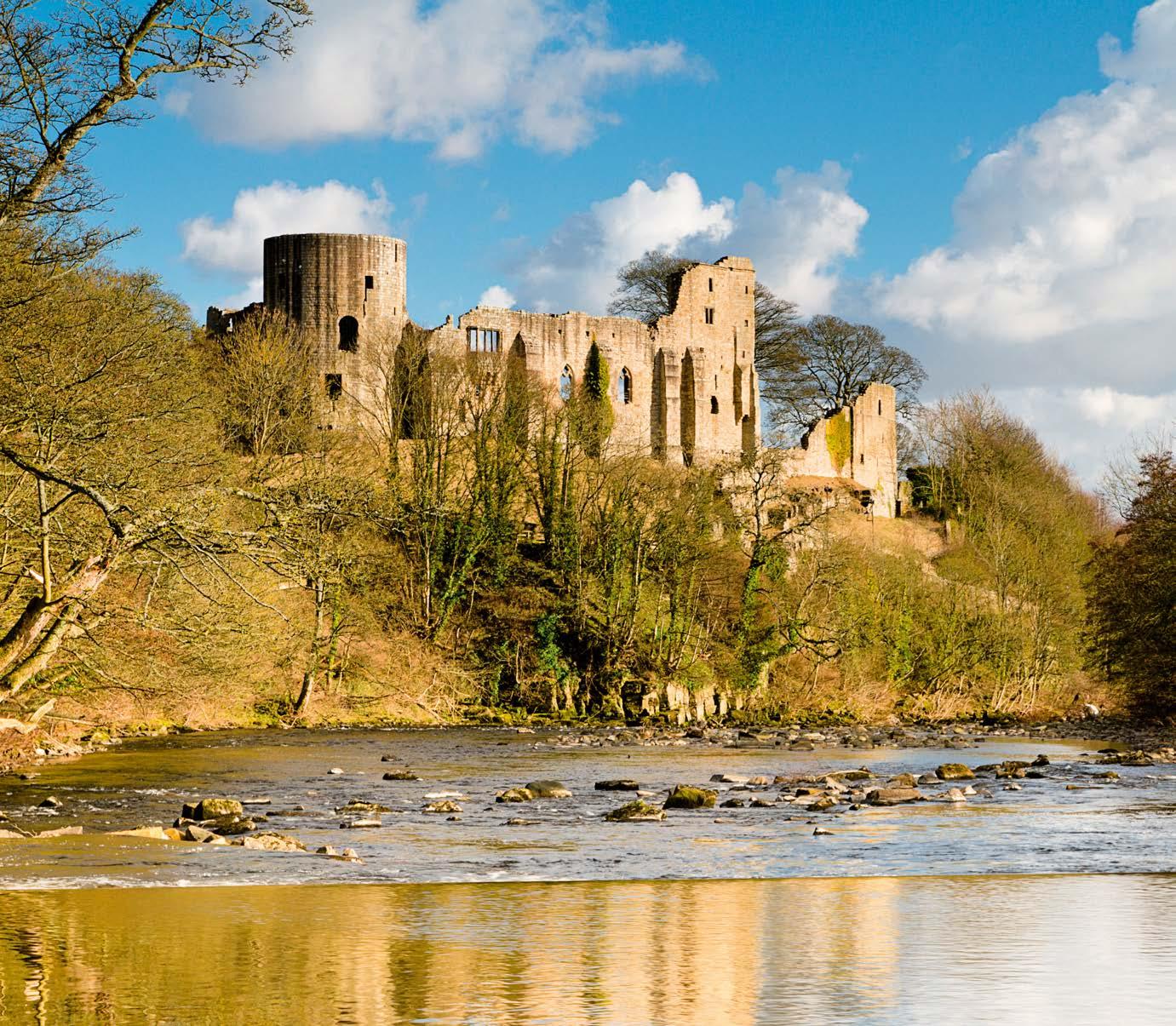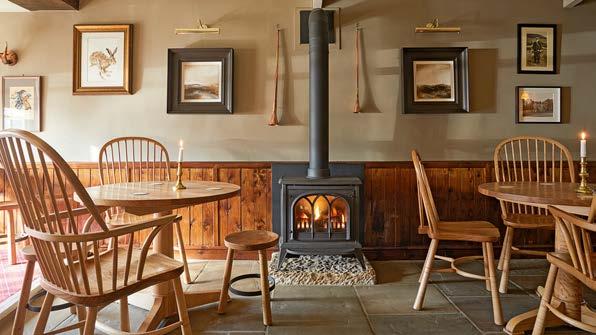
3 minute read
On Location County Durham has a rich industrial heritage and fine fortifications.
Frequent trains to Durham depart from London’s King’s Cross rail station and take just under three hours.
COUNTY DURHAM
Capture the Castles
This ceremonial county has a rich industrial heritage and many fine fortifications
With an industrial heritage based on coal mining, County Durham wasn’t always the tourist destination it is today. Coal production took off here in medieval times, peaking in 1923 when 170,000 people were employed in the pits.
Today, however, visitors to the country will be awed by the county’s best-known attraction, Durham Cathedral (durhamcathedral.co.uk), built in 1093 to replace an existing church. This important Norman-Romanesque structure was built to honour the pious St Cuthbert, who lived in seclusion on the Farne Islands off the Northumberland coast.
Wander the 1,000-year-old cobbled streets of Durham to enjoy this historic, hilly city to its fullest. Its university, which in 1832 was the third to open after Oxford and Cambridge, operates several

12th-century Barnard Castle towers above the River Tee in the town to which it has lent its name.
museums and also has a fi ne Botanic Garden on the western edge of the city (dur.ac.uk/botanic.garden).
The county stretches from the rugged North Pennines in the west, to the North Sea in the east. In the Teesdale Valley, fi nd High Force: with a drop of 21 metres, it is one of the most impressive waterfalls in the country. Barnard Castle to the south-east is fi lled with historic features, including Bowes Castle, built in the 12th century by Henry II; the ruins of Egglestone Abbey, built in the 13th century; and Barnard Castle itself (english-heritage.org.uk).
In the town of Bishop Auckland take in the history of the region by following the trail of the Auckland Project (aucklandproject.org), which includes the superbly preserved Auckland Castle, the Mining Art Gallery, and the vast, 150-acre Deer Park. ■
Great Escapes
Enjoy a simple local delicacy, stay at a historic inn with bags of charm, and visit a garden renowned for roses
A BITE TO EAT While you’re in the North East, look out for traditional stotties. Made from regular bread dough, a stottie is given just one rise and is cooked in a slow oven, which creates a soft, bun-like bake shaped like a disc. Sliced open, a stottie can be topped with butter and jam, or fi lled with quality ham and local cheese.












A COUNTRY INN For a classic English country experience, stay at The Rose and Crown in Romaldkirk, just outside Barnard Castle. Dating back to 1733, this dog-friendly inn o ers log fi res, tastefully decorated rooms and fi ne local food, including venison from the nearby Raby Estate. Little has changed in the village for the past 200 years, and to stay here is to step back in time. rose-and-crown.co.uk
A GARDEN TO VISIT Wynyard Hall near Stockton-on-Tees is not strictly in County Durham, but it’s very close. Owned by Sir John Hall, the 120-acre grounds comprise an arboretum and a walled garden that is renowned for its dramatic planting of 3,000 David Austin roses. Wander the meandering paths to fi nd elegant water features and herbaceous borders packed with specimen plants. The gardens date back to 1623 and have seen many changes over the centuries. wynyardhall.co.uk


